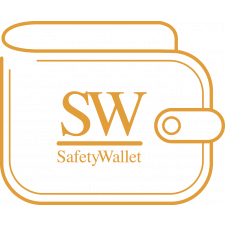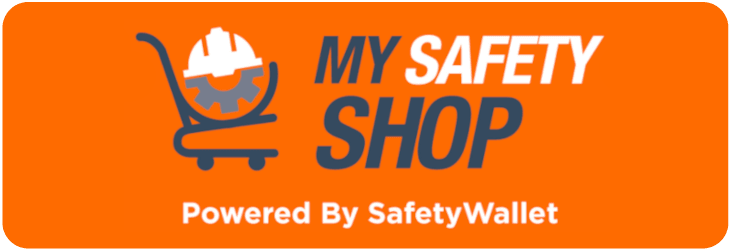Health and Safety Risk Assessment Process
Overview
A health and safety risk assessment process is a systematic process that includes the following steps:
- Identification of hazards and risk factors that have the potential to cause harm to employees.
- An analysis and evaluation of the risks that are associated with the hazards identified.
- A determination of the appropriate ways in which the hazards can be eliminated or controlled where the hazard cannot be eliminated.
A risk assessment involves a thorough examination of the working environment to identify the objects, situations, or processes that may cause harm to employees. After they have been identified, the employer can analyse them and evaluate how likely and severe the risk is.
When this has been determined, the next step involves deciding on control measures to effectively eliminate or control the harm.
Risk Assessment Importance
Risk assessments form a crucial part of an Occupational Health and Safety Management Plan and they help to achieve the following:
- Creating awareness of the hazards and risks in the workplace.
- Identifying those who may be at risk.
- Determining whether a control measure is required for a specific hazard.
- Determining whether the existing control measures are adequate, or whether more must be done.
- The prevention of injuries.
- Prioritising of hazards as well as control measures.
- Compliance with legal requirements.
Goal of a Risk Assessment
The goal of any risk assessment is to answer the following questions:
- What can occur and under which circumstances?
- What are the potential consequences if something occurs?
- How likely are the possible consequences to occur?
- Is the risk effectively controlled, or is additional action needed?
When must a Risk Assessment be done?
- Before new processes or activities are introduced.
- Before any changes are introduced into existing processes and/or activities. This includes when products, machinery, equipment, and tools change, or when new information regarding harm becomes available.
- When hazards are identified.
Risk Assessment Planning
It is crucial to determine the following:
- The scope of the assessment.
- The resources that are needed during the assessment.
- The type of risk analysis measures that are needed.
- The stakeholders who are involved.
- The laws, regulations, codes, or standards that are relevant to the assessment.
Risk Assessment Process
To carry out a risk assessment, the following steps can be followed:
- Hazard identification.
- Determining the likelihood of harm by considering normal operations and non-standard events, the review of available health and safety information regarding hazards and understanding minimum legislative requirements.
- Identifying actions which are necessary to eliminate the hazard or control the risk by using the hierarchy of risk control measures.
- Evaluation to confirm that the hazard has been eliminated, or whether the risk has been controlled effectively.
- Monitoring to ensure that the control continues to remain effective.
- Record keeping.
When the assessment is being carried out, the following must also be considered:
- The methodology as well as the procedures that are used during processing, use, handling, or the storage of hazardous substances, equipment, materials, and others.
- The actual as well as the potential exposure of employees; how many may be exposed, what exposure is or will be, how often and for how long they will be exposed.
- The measures as well as procedures needed to control exposure through engineering controls, work practices, and hygiene facilities and practices.
- The duration as well as the frequency of the task.
- Machinery, tools, and all other components used in operations and how they are used.
- Interaction between the activity being carried out and others in the area.
- The lifecycle of the product, process, or the service.
- Education and training of employees.
- How employees may react in a particular situation.
How are hazards identified?
- By considering all the aspects of the work.
- By considering non-routine activities such as maintenance, repairs, and cleaning, amidst others.
- Examining incident, accident, near miss, and ill-health records.
- By including people who work off-site
- Regarding the way in which the work is organised and carried out.
- Considering foreseeable usual conditions.
- Determining whether a product, machine, or equipment may be changed either unintentionally or intentionally.
- Reviewing the entire lifecycle of a process, activity, or operation.
- Examining risks to visitors and/or members of the public.
- Considering vulnerable groups of people.
How to establish whether the hazard will cause harm
Every hazard must be examined to determine its level of risk. To research the hazard, the following can be considered:
- The product information and/or manufacturer documentation.
- Past and previous experience of employees.
- Legislative requirements and/or any applicable standards.
- Industry codes of practice along with best practice.
- Health and safety material regarding the hazard including Material Safety Data Sheets (MSDS), research studies, and any other information.
- Information sourced from reputable organisations.
- Results from testing.
- Expertise of an occupational health and safety professional.
- Information pertaining to previous injuries, illnesses, near misses, and other forms of documentation.
- Observation when the task or activity is carried out.
Factors that may contribute to the level of risk must also be considered, including:
- The work environment.
- Systems of work
- Range of foreseeable conditions.
- The way in which sources may cause harm.
- How often and how much a person, or a group, may be exposed.
- The interaction, capability, skill, experience, and knowledge of employees who carry out the task or activity.
Risk Ranking and prioritisation
Ranking of risks is one way that can help to determine which risk is ore serios and must be controlled first. Priority can be established by considering the exposure of employees and the potential for an incident, injury, or illness. By assigning a priority to tasks, the employer is creating a ranking or an action list.
There is no specific way to determine the level of the risk; the employer must determine the technique that will work best for each given situation. Hazard ranking requires the knowledge of the workplace processes, the urgency of situations, and objective judgement.
The most common way through which risk level is determine is by using a risk matrix and by ranking risks according to their probability and severity to obtain a rating or a risk score.
Methods of hazard control
Once the risks have been ranked and prioritised, the employer can decide on ways to control each hazard. Hazard control methods are often grouped into the following categories:
- Elimination
- Substitution
- Administrative controls
- Personal Protective Equipment
Risk Assessment review and monitoring – importance
It is crucial for employers to know whether their risk assessment is accurate and effective. In addition, it is also important to ensure that changes in the workplace have not introduced any new hazards or changed the level of existing hazards that are ranked as low, to a higher level.
It is also best practice to review the risk assessment frequently to ensure that control measures remain effective.
How does SafetyWallet support its subscribers?
SafetyWallet, in partnership with MAKROSAFE and OHS Online, ensures that subscribers can obtain the highest level of compliance with the Occupational Health and Safety Act, all other Regulations, and more.
MAKROSAFE / SAFETYWALLET / MY SAFETY SHOP are all in Partnership.
Through the assistance and support in the health and safety programme of the subscriber, SafetyWallet helps subscribers with the health and safety risk assessments that must be conducted to ensure that subscribers are compliant in providing a healthy and safe working environment.
Click on the image below to find a SafetyWallet Solution that suits your business (Branch/Site specific) and get the 21 benefits along with the subscription:
Keeping your workplace legally Health and Safety Compliant may seem like a daunting task. At MAKROSAFE, we have an experienced team of OHS experts available to assist in keeping your company Health and Safety Compliant according to South African Occupational Health and Safety Act 85 of 1993 and Regulations.
The MAKROSAFE Health and Safety Risk Control Package will assist you with your Risk Management Programme.
By signing up with our Health and Safety Risk Control Package, MAKROSAFE will assist you with your Risk Management journey.

-Health-and-Safety-Risk-Assessment-Process-Banner-1.jpg)






Comments (1)
Thanks for sharing this informative Article
2023-01-28 12:32:13Dear Rubini Thank you for taking your time to read our wonderful blog... Follow this link to read all about The Health and Safety Risk Assessment Package: https://www.makrosafe.co.za/The-Health-and-Safety-Risk-Assessment-Package
2023-01-30 07:40:38